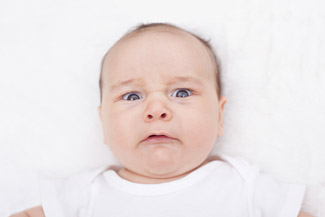When do infants start to perceive fear?
 Emotionally and socially, being able to perceive facial emotions is very important. It’s a skill that involves a great number of neural circuits. Normally, frightened faces aren’t a common sight in an infant’s environment. But, researchers from the psychology and neurocognition laboratory at the University of Grenoble (France) wanted to study the perception of fear in babies. At what age were they able to detect fear on a face?
Emotionally and socially, being able to perceive facial emotions is very important. It’s a skill that involves a great number of neural circuits. Normally, frightened faces aren’t a common sight in an infant’s environment. But, researchers from the psychology and neurocognition laboratory at the University of Grenoble (France) wanted to study the perception of fear in babies. At what age were they able to detect fear on a face?In children, the capacity to classify certain facial emotions, and particularly fear, appears at about 5-7 months. Eyes wide, eyebrows raised, mouth open: these stimuli tend to hold the baby’s attention. The researchers hypothesized that fearful faces might be preferentially detected over happy ones. They developed a protocol that allowed them to study the reactions of 192 babies when presented with different types of faces.
64 3.5-month-old babies (31 girls), 64 6-month-old babies (31 girls), and 64 12-month-old babies (32 girls) participated in the study. The babies sat in an adult’s lap, and the adults were instructed not to interact with the babies. Each infant viewed 6 stimuli displayed on two screens: faces that were more or less “noisy" (blurry, pixelated, grainy, or consisting only of spots). These women’s and men’s faces were either happy or fearful. The stimuli were generated so that half had eyes that were more visible than the mouth, while the other half had eyes that were less visible than the mouth; each of the trials involved a face model with a different level of noise: (from 30 to 100%). The scientists used what is known as the multivariate method of analysis to quantify where the baby focused its gaze, for how long, etc.
The results of the study were published in Proceedings of the Royal Society Part B: Biological Sciences. In all age groups, the infants showed a preference for the faces with the least noise. In addition, beginning at 3.5 months, the preference was stronger for faces whose eyes and mouth most strongly displayed signs of fear. The study however doesn’t allow us to tell which facial features (mouth, eyes) are of particular interest to infants.
This finding may seem somewhat strange given the fact that at this age, the baby’s environment is generally happy and safe, and signs of fear are relatively rare. In fact, this early preference for fear could allow infants to learn to pay attention to fearful faces and to detect danger. It would thus be a sign that babies are born with what we call the survival instinct (linked to functional connections in the limbic, visual, and attentional network)!
Source: Bayet L, Quinn PC, Laboissie`re R, Caldara R, Lee K, Pascalis O. “Fearful but not happy expressions boost face detection in human infants”. Proceedings of the Royal Society Part B: Biological Sciences, 284, Sept. 2017







